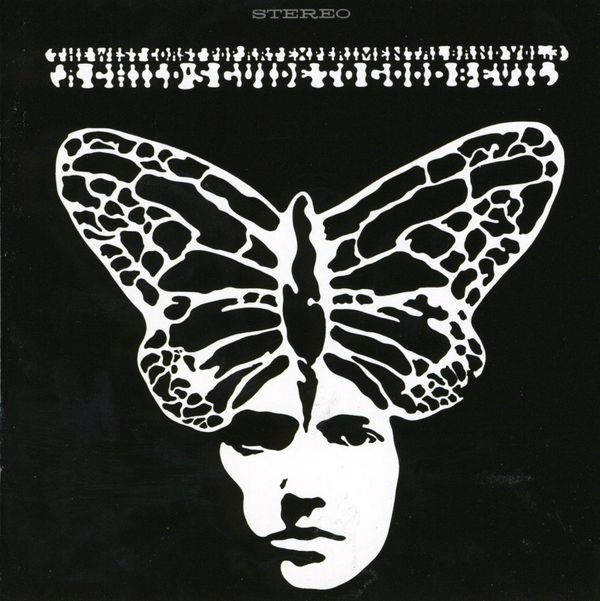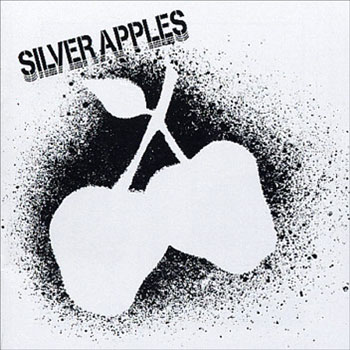Today, The Herd are mostly known as 'Peter Frampton's first band', which is a shame, because they certainly deserve to be remembered for more than that. Not only they were one of the best British Pop-Psych acts of 1967-1968, but they also were one of the best dressed bands of that time. Psychedelic/Peacock style was not an easy look to pull off and there was a thin line between 'flamboyant cool' and plain ridiculous (If you ever saw photos of The Move circa 1967, you know what I mean). The Herd, however always looked immaculate - especially keyboard player Andy Bown, who wore Regency jackets and had a great Mod haircut.
The Herd in 1968. From left: Andrew Steele, Andy Bown, Gary Taylor and Peter Frampton
The Herd in 1967. I love Andy Bown's red, double-breasted Regency jacket and Peter Frampton's blue velvet top/silver belt buckle combo..
The Herd, early 1968. Again, great Regency jackets worn by Peter Frampton (bottom left) and Andy Bown (bottom right).
The Herd formed in 1965 from the ashes of two Kent groups The Preachers and Moon's Train. Fifteen year-old Peter Frampton (who incidentally, was a former schoolfriend of David Bowie) was already making a name for himself as one of the most talented young guitarists in London area. The Herd were taken under the wing of Rolling Stone Bill Wyman, who once used to be in the same band as The Herd's drummer Tony Chapman. Wyman recommended The Herd to Parlophone. They recorded Jagger/Richards composition 'So Much In Love' and covered 'He Was Really Sayin' Something' by The Velvelettes. Both singles flopped and The Herd were dropped by Parlophone and deserted by their manager Billy Gaff. Soon after Tony Chapman and singer Terry Clark also quit. That could have been the end of The Herd, but the band was taken over by managers Alan Howard and Ken Blaikley who saw potential in Peter Frampton. They promoted him to a lead vocalist and they moved bass player Andy Bown to organ, with Gary Taylor taking over responsibilities of a bassist. That line-up was completed by new drummer Andrew Steele. The Herd signed to Fontana, and in 1967 released their first single for a new label. titled 'I Can Fly'. It is a great piece of psychedelic pop, but for some bizarre reason, it barely mustered the charts in Britain (it was a big hit in Germany, though).
The Herd performing 'I Can Fly' on TV show The Beat Club
Peter Frampton
Andy Bown (that jacket again!)
During recording The Beat Club performance
NME ad for 'I Can Fly', 1967
After 'I Can Fly' flopped, Howard and Blaikley encouraged The Herd to play more ambitious material. Their next single, 'From The Underworld' was a psychedelic adaptation of Jacques Offenbach's operetta Orpheus In The Underworld.
The Herd performing 'From The Underworld' on The Beat Club, 1967
'From The Underworld' was hit, reaching number six in November 1967. Their next single,'Paradise Lost' - an adaptation of John Milton's most famous poem - was also a hit in January 1968.
The Herd performing 'Paradise Lost' on The Beat Club, 1968
Andrew Steele
Cover of the single 'From The Underworld' 1967
The Herd performing live, 1967
Height of psychedelic cool - Peter Frampton and Gary Taylor, early 1968.
Height of psychedelic cool - Peter Frampton and Gary Taylor, early 1968.
The success of 'From The Underworld' and 'Paradise Lost' elevated The Herd to stardom. They toured with The Kinks and The Who and were photographed for hip magazines such as Rave.
Ad for October/November 1967 package tour of The Who, Traffic, The Herd, Marmalade and The Tremeloes.
Another package tour in April 1968, this time with The Kinks and Gary Walker.
Article about The Herd in Melody Maker, early 1968 (click to enlarge)
I love this photo from late 1967..
The Herd sporting the newest Carnaby Street fashions. I like Andrew Steele's fur coat. Not sure about that red PVC jacket, though.
I love Andy Bown's stripy blazer/black ribbon combo. Meanwhile, Andrew Steele is sticking with PVC..
Peter Frampton's good looks did not go unnoticed - Rave magazine declared him 'The Face Of 1968' giving him first taste of life as a teen idol.
Peter Frampton on the cover of Rave, January 1968.
In April 1968, The Herd released straightforward pop single 'I Don't Want Our Lovin' To Die' which turned out to be their most successful recording, reaching number 5 in charts.
Press ad for 'I Don't Want Our Lovin' To Die', April 1968.
Howard and Blaikley were forcing The Herd to record melodic pop songs, which did not sit well with Frampton and Bown, who wanted to move more into heavier sounds. Nevertheless, Frampton and Bown wrote few psych/pop songs together, including a single 'Sunshine Cottage'.
The Herd, 1968
Strangely enough, Frampton and Bown ended up giving away one of their best compositions - 'I Lied To Auntie May' - which was recorded by their mates, London group called The Neat Change. They were quite an interesting band - arguably first ever Skinhead band, The Neat Change performed soul material in Soho's Mod clubs. Apparently their sound was not dissimilar to The Action (with whom they often shared the bill at The Marquee). I say 'apparently' because no recording of The Neat Change from that era exist.
The Neat Change as Skinheads, circa 1968
In 1968, following the advice of their management, The Neat Change ditched Skinhead look, Soul sound and 'went psychedelic'. They recorded Frampton and Bown's 'I Lied To Auntie May' - a brilliant piece of melodic pop-psych.
It's a great song, and I am not sure whether The Herd ever recorded it themselves. The Neat Change did a great job, but it turned out to be their only ever single as they split up soon after (find out more about that interesting band here)
After 'Sunshine Cottage' flopped, Peter Frampton grew more and more disillusioned with The Herd. He hated his new heartthrob image and wanted to be appreciated as a guitarist. In the late 1968, he briefly considered accepting an invitation to join Small Faces on guitar. Although that did not happen, Frampton and Small Faces lead singer Steve Marriott formed a friendship which soon prompted them to quit their respective bands and start heavy blues-rock outfit Humble Pie in 1969.
The Herd, late 1968
The Herd briefly tried to continue without Frampton, with Bown on vocals. They recorded single 'The Game' in 1969. It was not a successful record (artistically or commercially), and the band split up soon after.
Frampton was still on a sleeve photo of 'The Game' even though he was no longer in the band.
We all know what happened to Frampton - few successful albums with Humble Pie, initially semi-successful solo career and finally, superstardom in America after Frampton Comes Alive unexpectedly sold fifteen million copies in 1976.
Frampton on the cover of the Rolling Stone, 1976
Andy Bown's 'Tarot'
I'll end with few more pictures of The Herd
1968 (just ignore that PVC)
1968
1968 (just ignore that PVC)
BIBLIOGRAPHY
Terry Rawlings, Then, Now and Rare: British Beat 1960-1969.
Images: Magic Mac , Marmalade Skies






































